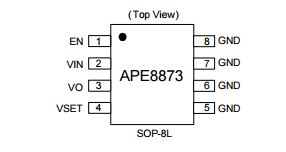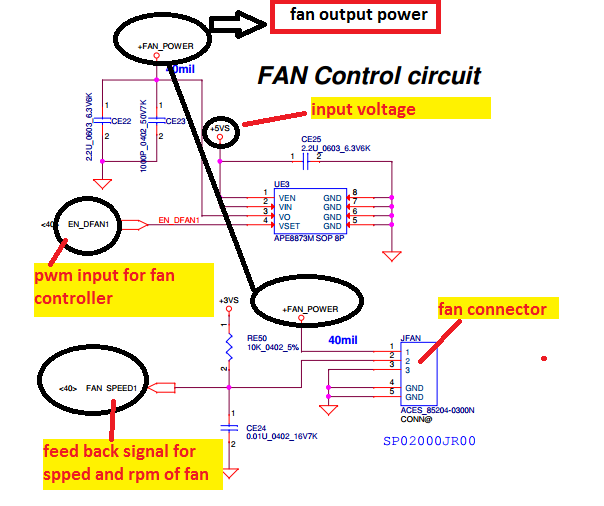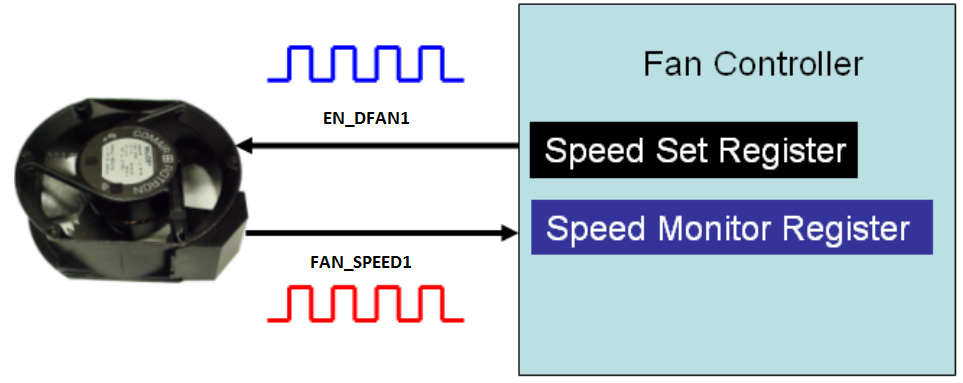
Laptops have to suffer a lot due to dust and moisture.
Because of this, the laptop fans get jammed and the laptop fan controller also gets spoiled.
This is very bad news, right?
Laptops have become a very important part of our life.
As soon as it is bad, all our online work stops.
Therefore, get it serviced every 3 months.
But sometimes the fan does not go bad, there is a problem on the motherboard.
What to do then?
Let us understand this circuit today
Laptop Fan controller APE8873M fundamental

As we can see 5 to 8 pins are ground. Pins 1 and 2 are input generally 5v supply. Pin3 is voltage output which is 1.6 times higher than the voltage set on pin no.4 named VSET.
In Dell 3521 VIN and EN pin are the same input from 5vs for internal logic supply and thermal section. Enable pin is by default set to enable by setting it too high (5vs). So when the VSET pin Gets input pulse From EC ( EN_DFAN1) the output generated to fan and fan gives the speed output to EC (FAN_SPEED1). This is the feedback signal of fan PWM output. it will compare the speed and check if the current speed is higher or lower than the expected one. If slower, the controller will increase the frequency to drive EN_DFAN1 automatically, otherwise decrease the frequency. The expected speed can be programmable by F/W.
 The laptop fan controller can be used to control the 12-bit PWM channel called FAN PWM. While Fixed-FAN mode enables and PWM function applied, the laptop fan controller will refer to the peripheral clock (33MHz) and the PWM high period and cycle time can be determined by the following formula:
The laptop fan controller can be used to control the 12-bit PWM channel called FAN PWM. While Fixed-FAN mode enables and PWM function applied, the laptop fan controller will refer to the peripheral clock (33MHz) and the PWM high period and cycle time can be determined by the following formula:
PWM Cycle Length = (PWM cycle register + 1 ) * peripheral clock resolution
PWM High Period = (PWM high period register + 1 ) * peripheral clock
Duty Cycle = (PWM high period register +1) / (PWM cycle register +1)
